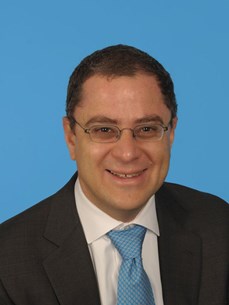Meeting
2015 ASCO Annual Meeting

Memorial Sloan Kettering Cancer Center and Weill Cornell Medical College, New York, NY
Ghassan K. Abou-Alfa , Marinela Capanu , Richard Kinh Gian Do , Ellen Hollywood , Michele Ly , Joanne F. Chou , Jean Kyung Lee , Louise Catherine Connell , Peter Justin Wan , Margaret Bradley , James J. Harding , Leonard Saltz
Background: Retrospective analysis of 14 pts with advanced HCC treated with SD after POD on S, showed a median progression free survival (PFS) and overall survival (OS) of 3.4 and 10.1 months respectively. We theorize SD may have synergistic activity in HCC through inhibition of Raf-1 by S promoting D induced ASK-1 mediated apoptosis. Methods: A single arm phase II study evaluated SD in pts with advanced HCC with RECIST 1.1 radiologic POD on S, ECOG 0-1, Child-Pugh A, and adequate bone marrow, renal, hepatic and cardiac function. The primary endpoint was OS at 6 months (OS6). Statistical plan: two stage design, unacceptable OS6 50%, acceptable OS6 72%, type I and II errors 5 and15% respectively. Secondary endpoints: median PFS, median OS, tolerance to SD, response rate by RECIST 1.1, and associations between previous length of exposure to S and OS and PFS. Results: Starting April 2012, 15 pts were enrolled. Male = 13, Median age 70 years (range 24-82), Median KPS 80%. The median duration of prior S was 3.5 months (1.3-27.7). The median cumulative D dose was 285mg/m2 (60-360 mg/m2), and median dose of S 400mg (200-800mg). OS6 was 87% (95% CI 56% to 96%), with median PFS, and OS of 4.1 months (95% CI 1.6-8.6), and 16.5 months (95% CI 6.3- not reached) respectively. Neither OS nor PFS were associated with previous sorafenib duration (p value 0.8 and 0.4 respectively). There were 1 (6%) partial response and 12 stable disease (80%) of whom 5 (42%) has SD for ≥ 4 months. Grade 3 and 4 adverse events ≥ 10% of the pts were: neutropenia (46%), lymphopenia (67%), hyperbilirubinemia (13%), anemia (20%), elevated AST (27%) and ALT (20%), ascites (13%), GI bleed (13%), hypophosphatemia (20%), hyponatremia (27%), and hypertension (20%). There were no treatment related deaths. Conclusions: With OS6 of 87%, the first stage decision rule requiring 8 out of 15 pts to be alive at 6 months has been met. The study is completing accrual of its second stage for a total of 30 pts. Reported adverse events are similar to those reported in the literature. Pre- and post-treatment ASK-1 and pERK expression levels in biopsied tumor tissue samples were obtained and will be assessed and presented at a later time. Clinical trial information: NCT01840592
Disclaimer
This material on this page is ©2024 American Society of Clinical Oncology, all rights reserved. Licensing available upon request. For more information, please contact licensing@asco.org
2015 ASCO Annual Meeting
Publication Only
Publication Only: Gastrointestinal (Noncolorectal) Cancer
Gastrointestinal Cancer—Gastroesophageal, Pancreatic, and Hepatobiliary
Hepatobiliary Cancer
NCT01840592
J Clin Oncol 33, 2015 (suppl; abstr e15147)
10.1200/jco.2015.33.15_suppl.e15147
e15147
Abstract Disclosures
2023 ASCO Gastrointestinal Cancers Symposium
First Author: Mingyue Cai
2018 ASCO Annual Meeting
First Author: Imane H. El Dika
2023 ASCO Gastrointestinal Cancers Symposium
First Author: Laura A. Dawson
2024 ASCO Gastrointestinal Cancers Symposium
First Author: Lorenza Rimassa